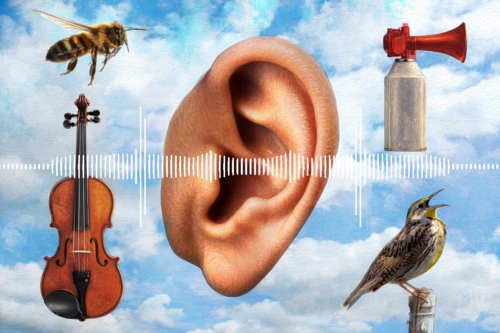
Members of Yale Physics Machta Lab have discovered a sophisticated, previously unknown set of “modes” within the human ear that put important constraints on how the ear amplifies faint sounds, tolerates noisy blasts, and discerns a stunning range of sound frequencies in between. This new discovery provides important insights into how faint sounds entering the human cochlea can be amplified enough for us to hear them.
By applying existing mathematical models to a generic mock-up of a cochlea — a spiral-shaped organ in the inner ear — the researchers revealed a new layer of cochlear complexity. The findings offer fresh insight into the remarkable capacity and accuracy of human hearing.
“We set out to understand how the ear can tune itself to detect faint sounds without becoming unstable and responding even in the absence of external sounds,” said Benjamin Machta, an assistant professor of physics in Yale’s Faculty of Arts and Science and co-senior author of a new study in the journal PRX Life. “But in getting to the bottom of this we stumbled onto a new set of low frequency mechanical modes that the cochlea likely supports.”
In humans, sound is converted into electrical signals in the cochlea. People can detect sounds with frequencies across three orders of magnitude and more than a trillion-fold range in power, down to tiny vibrations of air.
Once sound waves enter the cochlea, they become surface waves traveling along its hair-lined basilar membrane.
“Each pure tone rings at one point along this spiral organ,” said Asheesh Momi, a graduate student in physics at Yale’s Graduate School of Arts and Sciences and the study’s first author. “The hair cells at that location then tell your brain what tone you are hearing.”
“In a series of studies, the researchers have used mathematical models and statistical physics concepts to better understand biological systems, such as a pit viper’s sensitivity to temperature change.”
Those hairs also do something else: They act as mechanical amplifiers, pumping energy into sound waves to counteract friction and help them reach their intended destinations. The researchers said that pumping in just the right amount of energy — and making constant adjustments — is crucial for precise hearing.
But that is simply one set of hearing modes within the cochlea, and it is well-documented. The Yale team discovered a second, extended set of modes within the organ.
In these extended modes, a large portion of the basilar membrane reacts and moves together, even for a single tone. This collective response constrains how hair cells respond to incoming sound and how the hair cells pump energy into the basilar membrane.
“Since these newly discovered modes exhibit low frequencies, we believe our findings might also contribute to a better understanding of low-frequency hearing, which is still an active area of research,” said Isabella Graf, a former Yale postdoctoral researcher who is now at the European Molecular Biology Laboratory in Heidelberg, Germany.
Graf and Machta have collaborated on a series of studies in recent years that used mathematical models and statistical physics concepts to better understand biological systems, such as a pit viper’s sensitivity to temperature change and the interplay between phases of matter that come into contact within cell membranes.
Michael Abbott of Yale and former undergraduate student Julian Rubinfien, YC’2024, majoring in Mathematics and Physics and now a graduate student at Harvard, are co-authors of the new study. Machta, Momi, and Abbott are part of Yale’s Quantitative Biology Institute.
The research was supported by the National Institutes of Health, a Simons Investigator award, and the German Research Foundation.
This article has been adapted from the Yale News article of January 23, 2025 by Jim Shelton. See below for links to the original article and other related links.